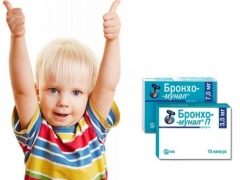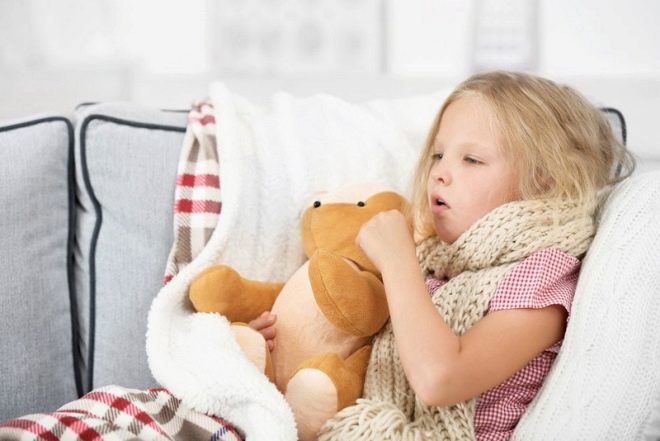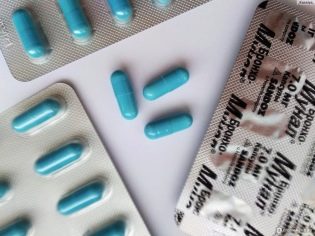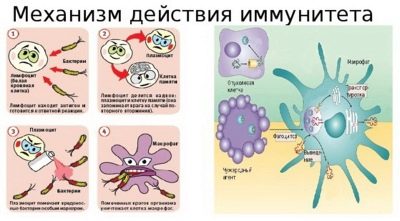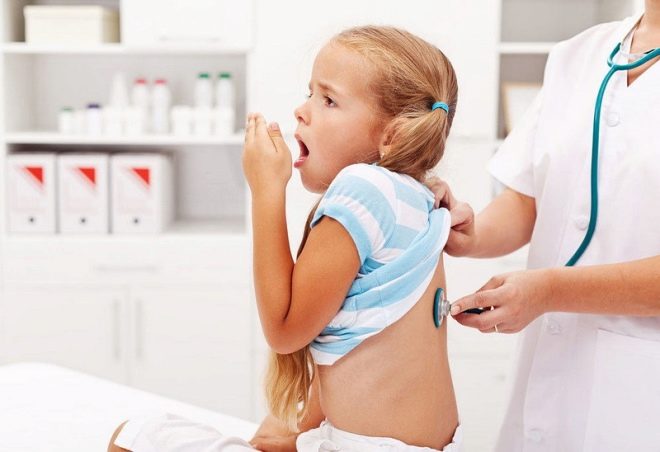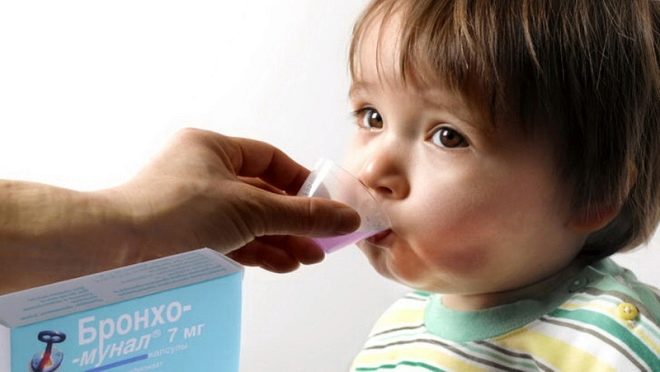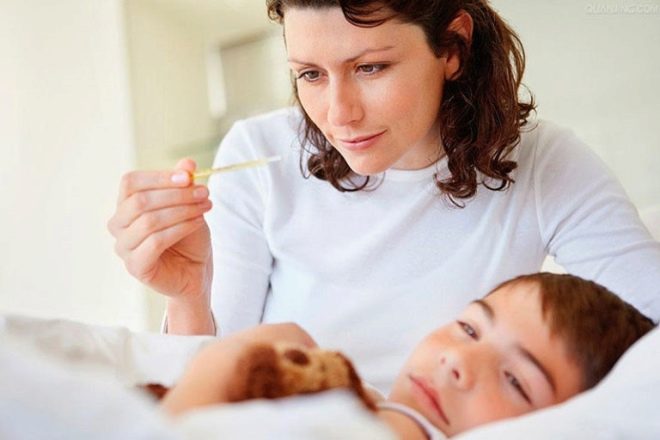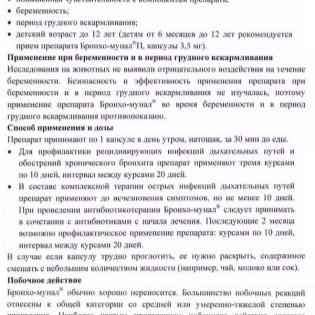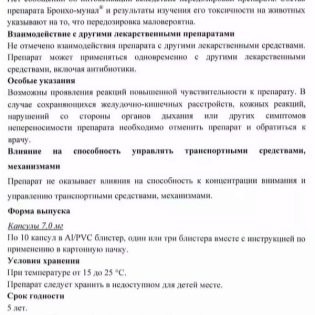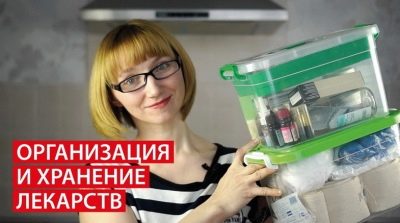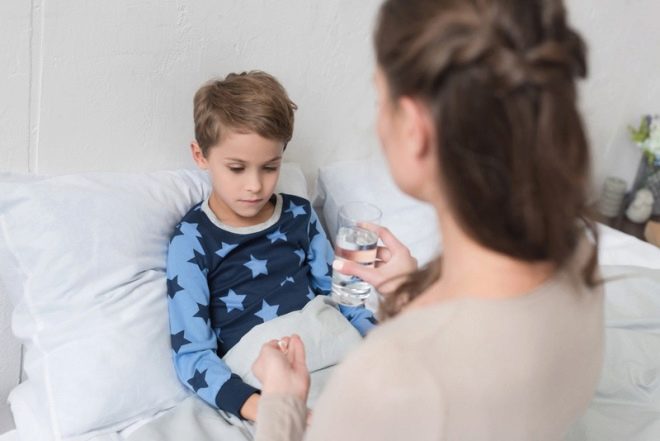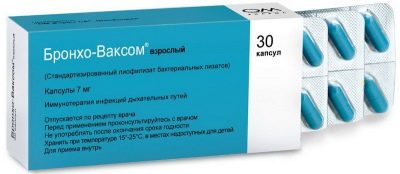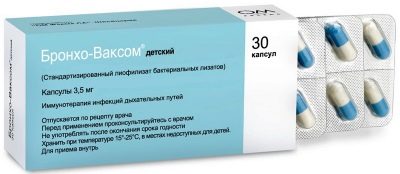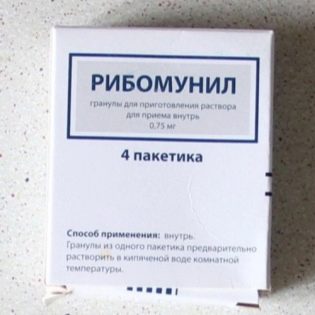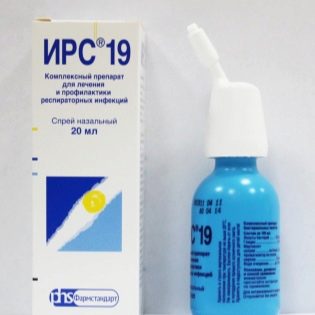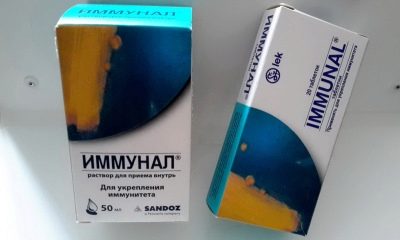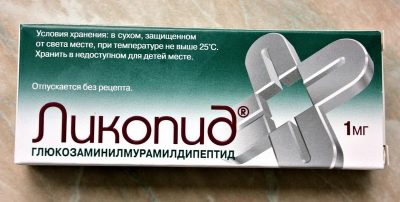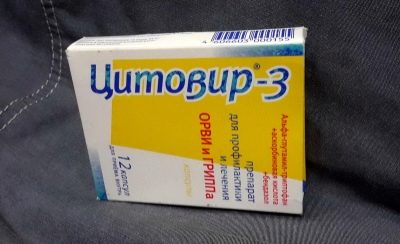Broncho-munal for children: instructions for use
With very frequent diseases of the respiratory system, doctors often advise strengthening the patient’s immune system with drugs that are known to have an immune stimulating effect. One of them can be called "Broncho-munal." This tool is in demand for bronchitis, otitis media and other diseases in adult patients, which is noted on its packaging, but it can also be used in children, taking into account age restrictions and some other nuances.
Release form
The drug is a product of Sandoz and is presented only in the form of capsules. They have an opaque blue shell, and a light beige powder is placed inside. The size of such capsules is number 3.
In one box 10 or 30 capsules are sold, packaged in blisters of ten pieces. In the form of a solution, syrup, powder, tablets and other forms of "Broncho-munal" is not available.
Composition
The main component of the drug, which is located inside the capsule powder, is a lysate of microorganisms that can affect the respiratory tract. The dosage of such lysates in each capsule is 7 mg.
Microbes in the composition of the medicine are destroyed and are represented by such species:
- hemophilus bacillus;
- Klebsiella pneumonia;
- Staphylococcus aureus;
- Streptococcus viridans;
- Pneumococcus;
- pyogenic streptococcus;
- Klebsiella ozena;
- moraccella cataris.
Among the inactive components of the powder are starch, mannitol and some other substances, and for the manufacture of the shell used the dye indigotin, gelatin and titanium dioxide.
How does it work?
Broncho-moon has the ability to stimulate the immune system. The destroyed bacteria presented in the preparation are antigens, therefore, when they enter the human body, immune cells react to them just as they do to live pathogens. This reaction is similar to changes in the immune system as a result of vaccination.
Owing to the intake of Broncho-munal, B-lymphocytes become more active, and their number in the blood increases, which leads to an increase in the formation of antibodies, including the activation of the synthesis of various types of immunoglobulins. Under the action of lysates, nonspecific immunity is also enhanced, in particular, lysozyme secretion is improved.
As a result of the use of Broncho-munal, the following positive effects are noted:
- more rare ORVI in a child;
- faster recovery from an infectious lesion of the respiratory tract (reducing the duration of disease);
- less risk of recurrence and exacerbations, if the child has a chronic pathology of the bronchi;
- increasing the resistance of the respiratory system to bacteria and viruses;
- rarer use of antibacterial drugs and other serious medicines.
Indications
Since Broncho-munala contains the most common causative agents of respiratory diseases, the field of application of this medicine is mainly diseases that are treated by ENT doctors and pulmonologists. The drug is in demand as a supplement to basic therapy for rhinitis, adenoiditis, sinusitis, bronchitis, and other acute infections. It is also prescribed to patients with chronic bronchial diseases to prevent their exacerbations.
From what age is prescribed?
According to the information from the instructions attached to the capsules, Broncho-munal is used in the treatment of children over 12 years old.This is due to the high dosage of bacterial lysates in a single capsule.
If you need to give the medicine to a younger patient, for example, at 2 or 3 years old, use capsules.Broncho-munal P". They are half the size of lysates, which allows you to prescribe a tool from six months of age.
Contraindications
The drug is not used in adolescents with intolerance to any component of the capsules. Other contraindications, in addition to hypersensitivity and age up to 12 years, are absent in Broncho-munala.
Side effects
The remedy rarely causes a negative reaction from the digestive tract, which may manifest as abdominal discomfort, diarrhea, nausea, or an attack of vomiting. Sometimes, after taking Broncho-munala, patients complain of shortness of breath, fever, cough or headache.
Some adolescents respond to capsules with an allergic reaction, for example, angioedema, erythema, or a rash.
If any side effects occur while taking Broncho-munal, you should stop using this medication and report negative symptoms to your doctor.
Instructions for use
Capsules must be taken on an empty stomach, so it is best to give the Broncho-munal to a teenager in the morning 30 minutes before breakfast. Both for diseases and for their prophylaxis, the drug is prescribed 1 capsule per day. It is swallowed and washed down with plain water or another drink.
How long to use "Broncho-munal" for diseases of the respiratory organs, the doctor determines (medication is taken until all symptoms disappear) but the remedy does not give less than ten days. The course of prophylactic administration of the drug lasts 10 days, but for the greater effect it is advised to repeat it three times with pauses of twenty days.
Overdose and interaction with other drugs
As the manufacturer notes, there have not yet been cases when an excessively high dose of Broncho-munala provoked intoxication. If the patient accidentally drinks more than one capsule, it is recommended to monitor his condition and, if it worsens, show the child to the doctor.
As for the compatibility of the drug with other drugs, the instructions noted that "Broncho-munal" can be used simultaneously with any medication. It is usually included in the complex therapy, combining with antibiotics, antiviral agents and other drugs.
Terms of sale
Since Bronchomunal is a non-prescription drug, it is not required to take a prescription from a doctor before purchasing it, but consultation is desirable.
For a small package of 10 capsules, on average, you need to pay 520-550 rubles, and a box with 30 capsules costs approximately 1300-1400 rubles.
Storage
Keep the capsules at home is advised at room temperature (not higher than 25 degrees Celsius) in a fairly dry place. In addition, the medicine should not be freely available for small children.
The shelf life of Broncho-munala is 5 years and is indicated on the package.
Reviews
On the use of "Broncho-munala" in adolescents with frequent diseases of the respiratory system or for the purpose of prevention there are many positive reviews from parents.
The drug is called effective and convenient to use, and its main disadvantage is the high price. However, you can also see negative reviews that have complaints about the lack of effectiveness in some patients. As for the portability of the capsules, it is usually called good, and allergies, nausea and other negative effects are rare.
Doctors refer to the "Broncho-munal" differently. Some experts often include it in the complex treatment of bronchitis, laryngitis, otitis or other respiratory tract infections. Other doctors, among whom Komarovsky, doubt its effect on immunity and claim unproven efficacy. In their opinion, It is much better to pay enough attention to the nutrition of the child, his daily routine, stay in the fresh air, physical activity and other similar factors to strengthen the protective forces of the child’s body.
Analogs
A full-fledged analogue of "Broncho-munal" is the drug "Broncho-Vaks adult", which is represented by the same dosage form and the same composition. It also contains lysates of the same microbes as in the Broncho-munale, and their dosage is 7 mg. Accordingly, the indications, the age range, and the pattern of use for such drugs are the same. The only difference is the price, which is slightly higher for Broncho-Vaksoma - for 10 capsules you need to pay about 560-620 rubles, and the cost of 30 capsules is about 1400-1500 rubles.
By the way, there is the same analogue for the child drug, which is "Broncho-munal P". It is called "Broncho-Vaks children" and contains 3.5 mg of lysates in each capsule. This drug is prescribed to children under 12 years of age. Like "Broncho-munal P", children "Bronchox" is allowed to use from six months of age.
In this case, for the smallest children, it is recommended to open the capsule by mixing its contents with milk, tea or juice.
Both drugs can be replaced by other drugs based on destroyed microbial cells. For example, a child older than 6 months with rhinitis, adenoids, bronchitis, and other diseases, the doctor may prescribe "Ribomunil"In granules, and infants older than three months - a spray for the nasal cavity called"IRS 19».
If the patient is already 3 years old, “Broncho-munal” may be replaced with pills “Imudon" or "Ismigen».
In addition, instead of "Broncho-munala", experts can prescribe and funds with a different composition, but with a similar effect on the immune system, for example:
- «Immunal». This medicine is also manufactured by Sandoz and contains echinacea juice as the main ingredient. Solution "Immunal" can be administered to children older than a year, and the tablet form is prescribed from the age of four.
- «Lycopid». Such a drug from domestic manufacturers is in demand both for acute respiratory viral infections, and for herpes diseases, and for purulent skin infections. Children are shown tablets with a dosage of 1 mg, which can be given from the age of three.
- «Tsitovir-3». This 3-component immunomodulator of Russian production is most often used for influenza and ARVI. For children, usually use powder or syrup, since such forms can be given to patients older than a year. However, “Tsitovir-3 is also available in capsules that are prescribed from the age of 6.
How to raise the immunity of the child, see the following video.
